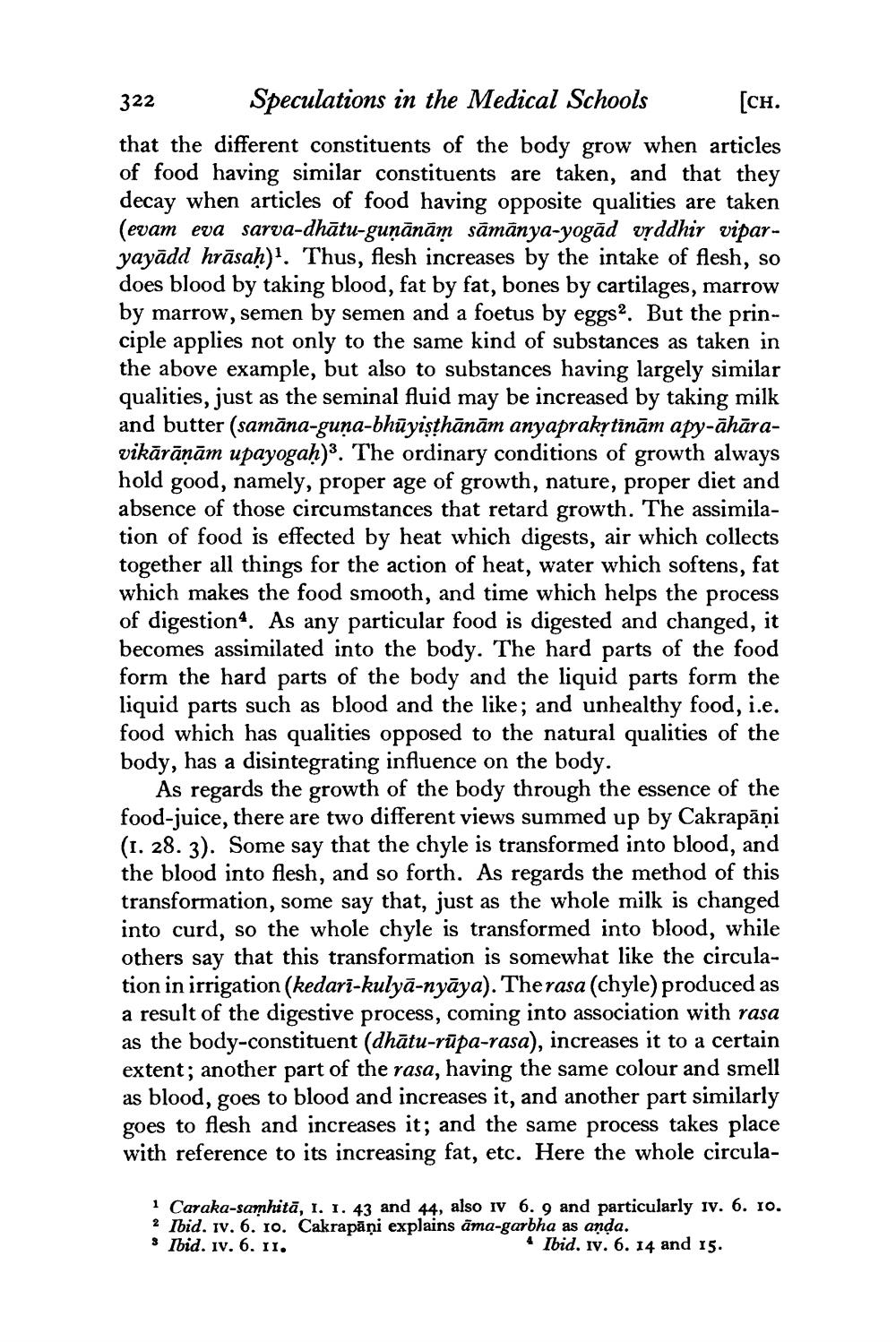________________
322 Speculations in the Medical Schools [ch. that the different constituents of the body grow when articles of food having similar constituents are taken, and that they decay when articles of food having opposite qualities are taken (evam eva sarva-dhātu-guņānām sāmānya-yogād urddhir viparyayādd hrāsaḥ)'. Thus, flesh increases by the intake of flesh, so does blood by taking blood, fat by fat, bones by cartilages, marrow by marrow, semen by semen and a foetus by eggs?. But the principle applies not only to the same kind of substances as taken in the above example, but also to substances having largely similar qualities, just as the seminal Auid may be increased by taking milk and butter (samāna-guna-bhūyisthānām anyaprakytinām apy-āhāravikārāņām upayogaḥ)3. The ordinary conditions of growth always hold good, namely, proper age of growth, nature, proper diet and absence of those circumstances that retard growth. The assimilation of food is effected by heat which digests, air which collects together all things for the action of heat, water which softens, fat which makes the food smooth, and time which helps the process of digestion". As any particular food is digested and changed, it becomes assimilated into the body. The hard parts of the food form the hard parts of the body and the liquid parts form the liquid parts such as blood and the like; and unhealthy food, i.e. food which has qualities opposed to the natural qualities of the body, has a disintegrating influence on the body.
As regards the growth of the body through the essence of the food-juice, there are two different views summed up by Cakrapāņi (1. 28. 3). Some say that the chyle is transformed into blood, and the blood into flesh, and so forth. As regards the method of this transformation, some say that, just as the whole milk is changed into curd, so the whole chyle is transformed into blood, while others say that this transformation is somewhat like the circulation in irrigation (kedari-kulyā-nyāya). Therasa (chyle) produced as a result of the digestive process, coming into association with rasa as the body-constituent (dhātu-rūpa-rasa), increases it to a certain extent; another part of the rasa, having the same colour and smell as blood, goes to blood and increases it, and another part similarly goes to flesh and increases it; and the same process takes place with reference to its increasing fat, etc. Here the whole circula
1 Caraka-samhitā, 1. 1. 43 and 44, also iv 6. 9 and particularly iv. 6. 10. 2 Ibid. iv. 6. ro. Cakrapāņi explains āma-garbha as anda. 3 Ibid. iv. 6. II.
4 Ibid. iv. 6. 14 and 15.




